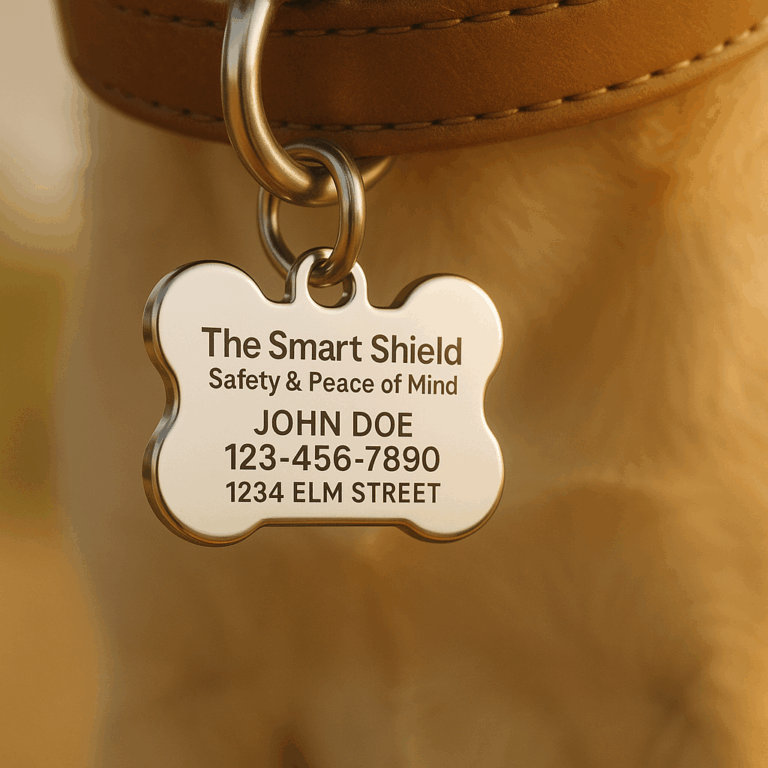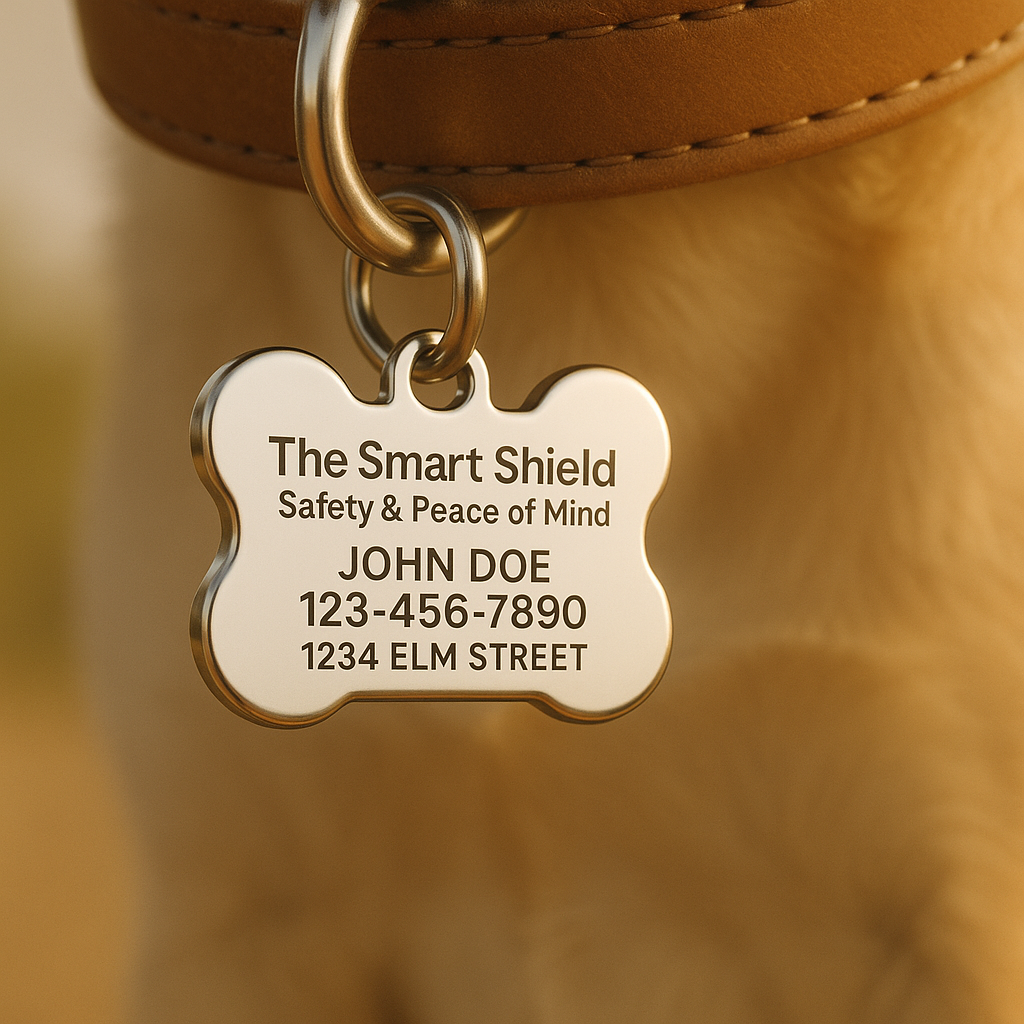The Smart Shield: Why Dog ID Tags Are a Must-Have
Imagine your dog slips out the front door during a thunderstorm or a squirrel-chasing escapade. Panic kicks in—how do you get your furry friend back if they’re lost? That’s where the humble ID tag steps in as an unsung hero in pet care. Beyond being a simple accessory on your dog collar, an ID tag is often the fastest way to reunite you with your dog, serving as a small beacon of hope in stressful moments.
ID Tags: More Than Just a Nameplate
At first glance, an ID tag looks straightforward—a metal or plastic disc with your dog’s name and contact info. But its role is deeply practical. A well-designed tag can drastically reduce the time your lost dog spends wandering alone, exposed to hazards like traffic, other animals, or harsh weather. According to the American Humane Association, about 10 million pets are lost or stolen annually in the U.S. Yet, nearly 90% of dogs with ID tags are returned home. That’s a powerful stat backing up the investment in a quality tag.

The best dog ID tags have clear, easy-to-read engraving, durable materials resistant to scratching and fading, and secure attachment points. Your choice of dog collar must also complement the tag, ensuring it stays put even during vigorous activity.
What Information Should Go on an ID Tag?
The data on your dog’s ID tag is your dog’s lifeline. At a minimum, include:
– Dog’s name: Calling your dog by name can calm them when found by a stranger.
– Your phone number(s): Mobile and home numbers if possible.
– Alternative contact: A friend or family member in case you’re unreachable.
– Address or general location: Helps narrow down where your pup belongs.
Keep it concise—too much information can become illegible. If you want to include medical alerts, like allergies or medications, you can use smaller text on the back or invest in tags designed for two-sided engraving.
Technology Amplifies Traditional ID Tags
Let’s face it: technology and pet care go paw-in-paw these days. While traditional ID tags remain essential, combining them with tech options like QR-coded tags or microchips can enhance your dog’s safety.
QR-coded IDs link a finder’s phone scan to an online profile with detailed info about your dog and emergency contacts. It adds a layer of interaction beyond static text. Microchips, while invisible, require scanners—making visible ID tags your dog’s first line of defense.
Even better, integrate your dog’s ID tag with GPS tracking collars. If your invisible fence training has a slip-up or your adventurous puppy finds a gap, the combination of an ID tag and GPS tracker allows you to rely on both offline and online methods to locate your dog swiftly.
Invisible Fence Meets ID Tag: A Dynamic Duo
Speaking of invisible fences, they’re brilliant for keeping dogs safely contained without the aesthetic or physical barriers of traditional fencing. But let’s be honest, no system is flawless. Dogs can escape, collars can malfunction.
ID tags complement invisible fences perfectly—they are your safety net. The fence trains your dog’s behavior by teaching boundaries, while the ID tag ensures that if your dog ventures out, anyone who finds them can help bring them back. This harmony between technology and traditional pet care gear maximizes safety.
Customizing for Your Dog’s Personality and Lifestyle
Not all dogs and collar setups are created equal. Active dogs who love hiking or water sports need sturdy, waterproof ID tags. Fashion-conscious pet parents might opt for engraved leather or metal tags that match their dog collar’s aesthetic.
Puppies, younger dogs, or dogs prone to losing their tags might benefit from supplemental options like stitched-on ID tags integrated into harnesses or smart collars with GPS capabilities.
Training Your Dog to Wear Their ID Tag Comfortably
Getting your dog used to an ID tag early is crucial. Start with a light, comfortable dog collar fitted with an ID tag well before your puppy’s first outdoor adventures. Positive reinforcement—think treats and praise—makes the process smoother.
Regular pet care checks should include inspecting the collar and ID tag. Make sure the tag is securely attached, legible, and not causing discomfort. Replace worn or damaged tags promptly.
Behavior and Safety Go Hand in Paw
Proper training can reduce lost-dog incidents. Dogs responding to their name, recall commands, and boundary training via invisible fences are less likely to wander. But, no matter how good the training, accidents happen. That’s why having an ID tag on your dog is non-negotiable.
“If a dog is lost, an ID tag is often the fastest way home,” says Dr. Jane Thompson, a veterinarian specializing in behavior. “It’s a simple tool that can save a lot of heartache.”
DIY or Buy? Choosing the Perfect Dog ID Tag
The market offers a plethora of options: metal, plastic, enamel-coated, glow-in-the-dark, customizable shapes—the choices are endless. While DIY tags can add a personal touch, professionally made tags tend to last longer and handle wear better.
Look for lightweight tags that don’t irritate your dog’s neck. Avoid overly heavy or noisy tags—your dog will thank you when they’re not jingling with every step.
Final Paws on ID Tags
ID tags are the silent, steadfast guardians of your dog’s safety toolkit. They work hand-in-paw with training, invisible fences, and tech gadgets to ensure your dog’s safety during everyday adventures and unexpected escapes. Investing a bit of thought and care into your dog’s collar and ID tag setup is one of the smartest moves a pet parent can make.
So, next time you clip on that dog collar or set up your puppy’s invisible fence training, make sure that little ID tag is front and center—because when it comes to keeping your dogs safe, every detail counts.
Tags: dog collar tags, dog ID tags, dog identification collar, dog safety accessories, lost dog recovery, personalized dog tags, pet identification tags, pet owner essentials, pet safety ID, reuniting lost pets